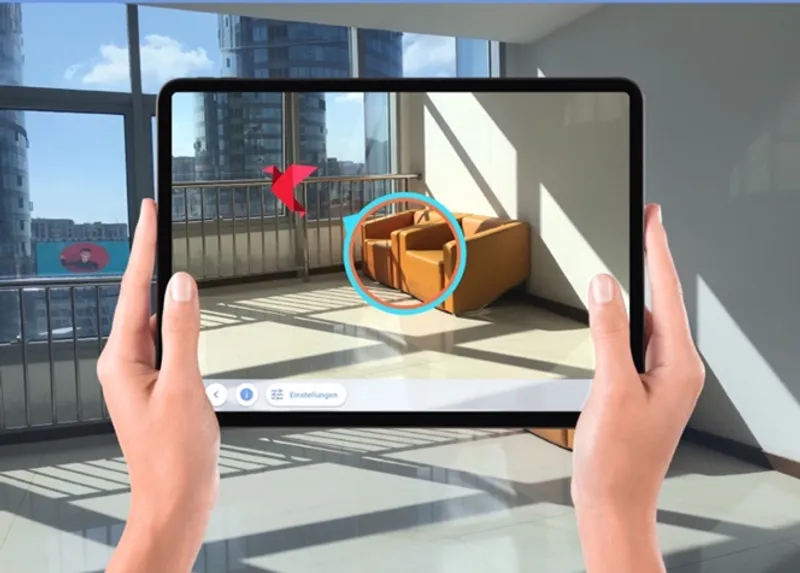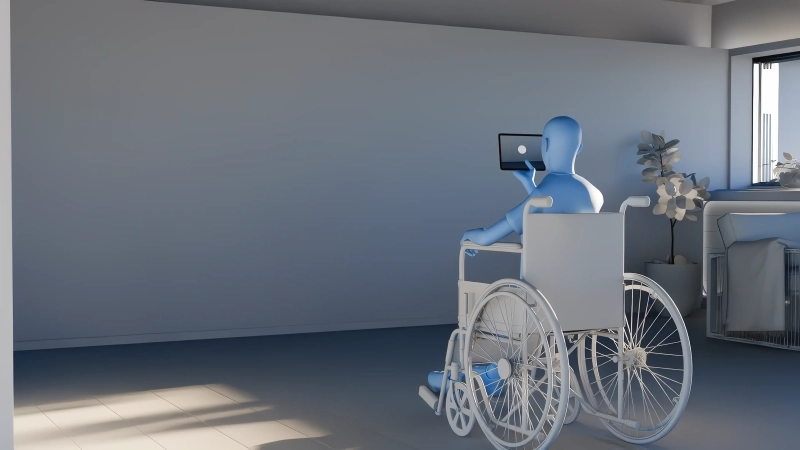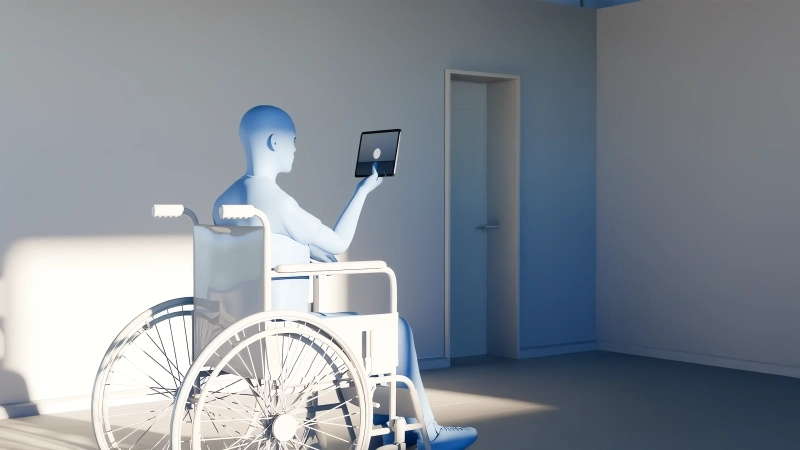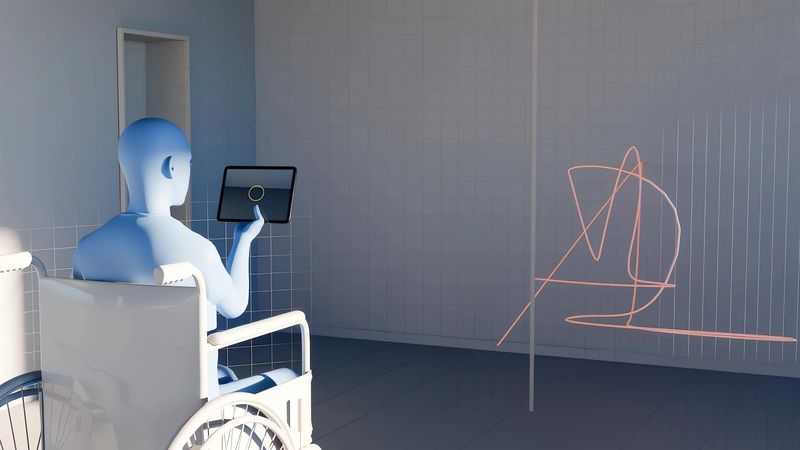Free-Exploration-Test
Provides quick indications of the presence of neglect
Reliable indications of the presence of neglect
Efficient and automated evaluation
Integration of Augmented Reality (AR)
Reliable indications of the presence of neglect
Efficient and automated evaluation
Integration of Augmented Reality (AR)
What is Negami Free-Exploration-Test?
Neglect is a disorder that patients can develop after a stroke. The free exploration behavior of affected patients is strongly shifted to the side of the brain damage (usually right). As a result, people or objects located on the left side are often not found or overlooked.
The Free-Exploration Test (FET) works with the principle of Augmented Reality (AR), where a virtual element (here an origami bird) is inserted into the patient's real environment via the camera of a tablet.
The patient is supposed to search for this virtual origami bird during an acclimatization phase by moving the tablet around in the surrounding space. In the subsequent, decisive test phase, the patient's free exploration behavior is automatically recorded for 30 seconds and the average horizontal angle of view is calculated. This value indicates whether neglect might be present.

Why Negami Free Exploration Test?
The FET aims to directly capture the core problem of neglect - a right-shifted exploration behavior - without spatial restrictions. This approach distinguishes it from other neglect diagnostics: the exploration capture in the FET is not limited by the spatial dimensions of a paper/screen or restricted by the positioning of target stimuli
With an implementation time of only about 3 minutes and an automated recording and calculation of the average horizontal angle of view, the FET is characterized by high time efficiency. This makes it particularly practical for use in clinical daily routine, where time is a critical factor.
Augmented Reality is a virtual extension that is free of side effects and has a motivating and fun-enhancing influence. This innovative technology is used on a tablet, making the FET widely available.
How does the Free Exploration Test work?
In this phase, patients are familiarized with the tablet and exploration through the tablet. They should find a virtual origami bird, which is initially hidden on the ipsilateral (right) side at +10° (starting from the patient's straight-ahead orientation) and then on the contralateral (left) side at -10°. The goal is to find the bird and move the tablet so that the bird is captured by a circle on the screen. If the patient does not find the bird, the search is aborted after 30 seconds.

The test phase begins like the previous two conditions of the acclimatization phase. The patients are again instructed to find the virtual origami bird. The difference is that in this condition no bird is hidden. The patient's free exploration with the tablet is recorded for 30 seconds.

The result of the test phase is a value that indicates the average horizontal exploration movement for the 30 seconds. This value can provide indications of whether spatial neglect is present (if >9°). Additionally, a graph is created that shows the dwell time of the horizontal exploration movement in 2° sectors.

Sign up for our waiting list and we will notify you as soon as the app is available.